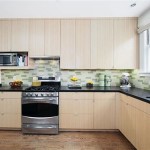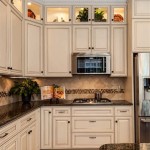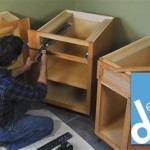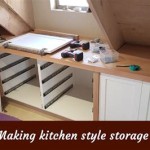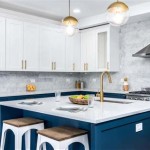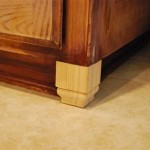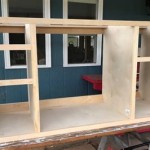How to Organize Deep Kitchen Cupboards
Deep kitchen cupboards, while offering ample storage space, often present a challenge in maintaining organization. Their depth can lead to items becoming lost in the back, forgotten, and ultimately contributing to clutter. Effective organization is key to maximizing the utility of these storage areas, preventing food waste, and enhancing the overall functionality of the kitchen.
The process of organizing deep kitchen cupboards requires a systematic approach, encompassing emptying, sorting, planning, and implementing organizational solutions. This article will explore practical methods and strategies for transforming deep cupboards from chaotic spaces into efficient and accessible storage areas.
Initial Assessment and Emptying
The first crucial step involves a comprehensive assessment of the contents of the deep cupboards. This requires completely emptying the cupboard to gain a clear understanding of the items being stored. This provides an opportunity to identify infrequently used items, duplicates, expired goods, and items that are no longer needed. Without emptying the cupboard, a true evaluation of the space and its contents is impossible.
As items are removed, it is advisable to place them on a large surface, such as a kitchen table or countertop. This allows for easy categorization and visual assessment. During this process, a trash bag and recycling bin should be readily available for immediate disposal of unwanted items. Careful attention should be paid to expiration dates on food items, as expired products are a common culprit in cluttered deep cupboards.
Furthermore, the empty cupboard should be thoroughly cleaned before reintroducing any items. This includes vacuuming or sweeping to remove crumbs and dust, as well as wiping down the shelves with a damp cloth and mild cleaning solution. A clean cupboard provides a fresh start and helps prevent future pest infestations.
Categorizing and Sorting
Once the cupboard is emptied and cleaned, the next step is to categorize and sort the items. This involves grouping similar items together, such as baking supplies, canned goods, dry goods, or small appliances. Effective categorization is essential for creating a logical and accessible storage system.
Several approaches can be used for categorizing items. One common method is to group items based on their function or purpose. For example, all baking ingredients (flour, sugar, baking powder, etc.) would be grouped together. Similarly, all canned goods (soups, vegetables, fruits) would form another category. Another approach is to group items based on their frequency of use. Items that are used frequently should be placed in easily accessible locations, while items that are used less often can be stored further back or higher up.
During the sorting process, it is helpful to evaluate the condition of each item. Damaged or broken items should be discarded or repaired. Items that are no longer needed or used should be donated or sold. This reduces clutter and ensures that only essential and functional items are placed back into the cupboard.
Consider separating items that are used together into the same category, even if they might seem distinct. For example, coffee filters, coffee beans, and sugar could be grouped together in a “coffee station” category. This encourages streamlined workflow when preparing food or beverages.
Implementing Organizational Solutions
After categorizing and sorting the items, it is time to implement organizational solutions to maximize the space and accessibility of the deep cupboards. This involves utilizing various storage containers, organizing tools, and placement strategies to create an efficient and functional system.
Pull-out shelves or drawers are highly effective for deep cupboards. They allow easy access to items stored in the back, eliminating the need to reach and rummage. These shelves can be custom-built or purchased as pre-made units. When selecting pull-out shelves, it is important to consider the weight capacity and dimensions of the cupboard.
Lazy Susans, or rotating turntables, are another useful organizational tool, particularly for storing spices, condiments, or canned goods. They allow for easy rotation and visibility of all items, preventing items from getting lost in the back. Lazy Susans are available in various sizes and materials, allowing for customization to fit the specific needs of the cupboard.
Shelf dividers can be used to separate stacks of plates, bowls, or baking sheets, preventing them from toppling over and creating clutter. They also help to maximize vertical space by creating designated areas for different types of items.
Clear storage containers are ideal for storing dry goods, such as flour, sugar, pasta, or cereal. They allow for easy identification of the contents and help to keep food fresh. Choose containers that are stackable to maximize space utilization. Labeling the containers with the contents and expiration dates is also recommended.
Consider using tiered shelves or risers to elevate items in the back of the cupboard, making them more visible and accessible. This is particularly useful for storing canned goods, spices, or small jars.
Hanging organizers can be attached to the inside of the cupboard doors to store smaller items, such as measuring cups, spoons, or spice packets. This utilizes otherwise wasted space and keeps frequently used items within easy reach.
When arranging items within the cupboard, consider the frequency of use. Items that are used most often should be placed in the front and within easy reach. Items that are used less often can be stored further back or higher up. This ensures that the cupboard is organized in a way that is convenient and efficient for daily use.
Strategic placement of different categories within the cupboard should also be considered. For example, baking supplies could be placed near the mixing bowls, while cooking oils and spices could be placed near the stove. This creates a logical flow and streamlines the cooking process.
Utilizing vertical space is key to maximizing storage capacity in deep cupboards. Install shelves at various heights to accommodate different sized items. Consider using adjustable shelves to allow for flexibility and customization as needed.
Proper lighting is essential for navigating deep cupboards. Consider installing under-cabinet lighting or battery-operated LED lights inside the cupboard to improve visibility and make it easier to find items. This is especially helpful in cupboards that are located in darker areas of the kitchen.
Documenting the organization system can be helpful for maintaining it long-term. Taking photos of the organized cupboards and creating a simple inventory list can serve as a reminder of where items are located and how the system is intended to function.
Finally, it is important to establish a regular maintenance routine to prevent the deep cupboards from becoming cluttered again. This involves periodically checking expiration dates, removing unwanted items, and reorganizing as needed. A consistent maintenance routine will ensure that the deep cupboards remain organized and functional for the long term.

Iheart Organizing My Favorite Tips For A Deep Pantry

How To Organize A Deep Pantry In 5 Easy Steps Rooms Need Love

Iheart Organizing My Favorite Tips For A Deep Pantry

Iheart Organizing My Favorite Tips For A Deep Pantry

How To Organize A Pantry With Deep Cabinets Before Afters Natalie Paramore

How To Organize A Cabinet Style Pantry Dwell

12 Easy Tips To Organize A Deep Pantry Practical Perfection

Iheart Organizing My Favorite Tips For A Deep Pantry

Iheart Organizing My Favorite Tips For A Deep Pantry

9 Best Tips On How To Organize A Pantry With Deep Shelves Amanda Katherine
Related Posts

